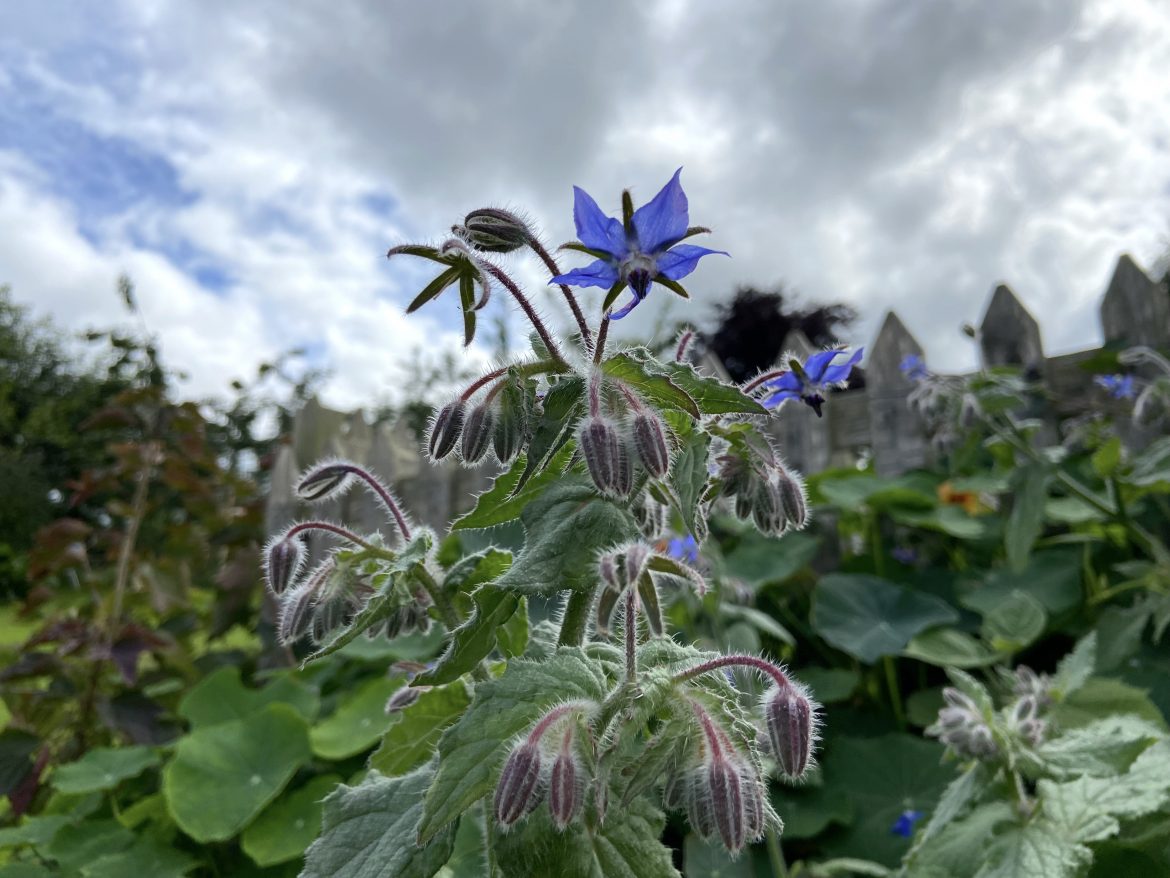Borage (Borago officinalis) is a beautiful blue-purple flowering plant that is a magnet for bees, butterflies, and other flying insects. It’s also a great source of nectar and pollen, which are essential nutrients for pollinators.
A single borage plant can produce up to 1.1 grams of nectar and pollen per day. That’s a lot of food for pollinators, and ensures that they have enough to eat throughout the growing season.
Borage is a fast-growing, self-seeding annual, so it can be planted early in the season and will start to flower within a few weeks. It’s also relatively easy to care for, and it’s not susceptible to many pests or diseases.
Why Borage is Beneficial for Pollinators
Borage is a valuable nectar and pollen source for a wide variety of pollinators, including honeybees, bumblebees, butterflies and moths. The nectar from borage is high in sugar, which is a valuable source of energy for pollinators. The pollen from borage is also high in protein, which is essential for the development of pollinator larvae.
In addition to providing a source of food, borage also provides a place for pollinators to rest and refuel. The large, open flowers of borage are perfect for bees and butterflies to land on, and the nectar is easily accessible. Borage also attracts other beneficial insects, such as ladybugs and lacewings, which help to control pests in the garden.
How to Grow Borage
Borage is easy to grow from seed. Sow the seeds directly in the garden in early spring, once the soil has warmed up to at least 16C (60F). Space the seeds about 12 inches apart. Borage will germinate in about two weeks.
Borage prefers full sun, but it will tolerate partial shade. It can be grown in most types of soil, but it prefers well-drained soil. Borage is not drought-tolerant, so water it regularly, especially during hot, dry weather.
Borage will start to flower in about 6-8 weeks after sowing. The flowers will continue to bloom throughout the summer. Once the flowers have finished blooming, you can deadhead them to encourage more blooms.
Harvesting Borage
The flowers of borage can be picked as soon as they open. The leaves can also be eaten, and they have a mild cucumber flavour and work extremely well when added to a gin and tonic. The seeds of borage can be harvested and pressed for oil.
Borage in the Garden
Borage is a versatile plant that can be used in a variety of ways in the garden. It can be grown as a standalone plant, or it can be incorporated into a flower border or a vegetable garden. Borage is also a good companion plant for tomatoes, cucumbers and squash.
Closing Thoughts
Borage is a beautiful, easy-to-grow plant that is a valuable addition to any garden. It is especially beneficial for pollinators, and it can help to attract a variety of beneficial insects to the garden. If you are looking for a way to attract more bees, butterflies, and other pollinators to your garden, I encourage you to give borage a try.
Fun Facts
- The name borage comes from the Greek word borage, which means “to rage.” This is because the leaves of borage were once used to treat a variety of ailments, including fever and inflammation.
- Borage is a member of the Boraginaceae family, which also includes plants such as comfrey, forget-me-not, and heliotrope.
- The flowers of borage are edible and can be used in salads, soups, and other dishes.
- The leaves of borage can be used to make a refreshing tea.
- The seeds of borage can be pressed for oil, which is a good source of omega-3 fatty acids.
